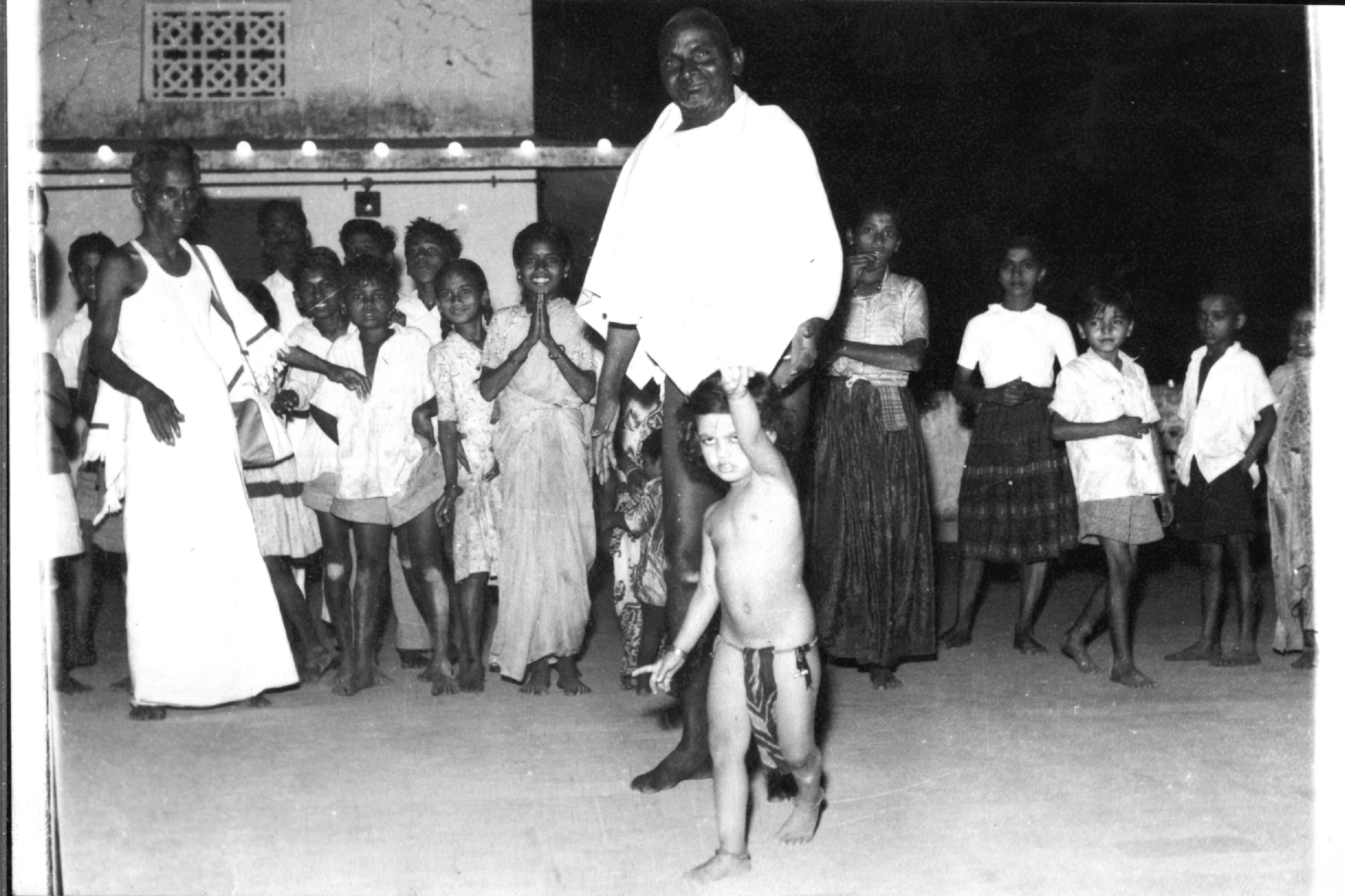
The Layout of Vaikunt Ashram
I have come to understand, through the recollections of elders and devotees, that Bhagavan Nityananda’s first arrival in Vajreshwari was both purposeful and mystically charged. He was accompanied by Shri Sitaram Shenoy, a devout follower who had been blessed to travel with the Master on this remarkable journey. Their path took them from Sandhurst Road Station in Bombay to Thane, a route still traversed today by many pilgrims, though few realize the significance it once held. From Thane, they boarded a modest bus that wound its way through Bhiwandi, eventually bringing them to the hallowed lands of Vajreshwari.
Upon reaching the ancient shrine town, nestled in the shadow of the Mandakini hills and known for its healing hot springs, they ascended the stone steps leading up to the temple of Goddess Vajreshwari. At the very entrance, where the majestic lion statue now guards the threshold, Bhagavan paused. With divine awareness, He gently patted the lion’s back and, in a voice filled with commanding serenity, addressed the Devi: “Awake! Soon devotees will come for Darshan.”


These were not mere words; they were a divine invocation—an announcement to the presiding Shakti that the time had come. A new chapter in the spiritual history of Vajreshwari was about to unfold.
Following this sacred moment, Bhagavan instructed Shri Sitaram Shenoy to return, having fulfilled his part in bringing the Avadhuta to this destined place. Bhagavan remained behind for a few days, staying at the spot where the Shree Nath Mandir now stands. His presence there sanctified the space, and it is said that the vibrations of His meditation still linger, felt by those attuned to inner silence.



From Vajreshwari, Bhagavan moved a short distance to Akroli, near the hot water springs and the ancient temple of Shree Rameshwar. He took residence in a modest room adjacent to the kundas. It was here that the first stirrings of a following began. Many who had known Him from His earlier years in Karnataka sought Him out—drawn by an unseen force, guided by inner longing. Among them were early devotees like Mr. Rao, Mrs. Susheela Prabhu, and members of my own family, who would often make the journey to sit in His presence.
Mrs. Susheela Prabhu once shared a vivid account from those days: One evening, as devotees sat in silent communion around Bhagavan, a large cobra slithered into the room. Unafraid and undisturbed, the snake came right up to Bhagavan, as if paying its respects. No one moved. The air was thick with awe, not fear. Bhagavan simply looked at the cobra, nodded gently, and the creature turned and departed. The unspoken harmony between man and nature, saint and serpent, left a lasting impression on all present.
However, the people of Akroli were not all welcoming. Some were unsettled by His unconventional ways, His silence, His mystery. Sensing this, Bhagavan quietly moved on to Ganeshpuri—a nondescript village at the time, barely known beyond the locals.
In Ganeshpuri, He first took shelter in a small, thatched hut behind the Bhimeshwar temple. It was a humble beginning, but the sanctity of His presence began to attract sincere seekers. Among the earliest residents near Him were Gangubai and her husband, whose home stood not far from where Kailash Bhuvan is situated today.
After some months, as the number of visitors slowly increased, the devotees approached the local villagers and humbly requested a more suitable place for Bhagavan to reside. Moved by their sincerity—or perhaps subtly influenced by the divine will—small patch of land near a pond opposite today’s Kailash Bhuvan was offered. A simple hut was built there, nestled by the water and shaded by trees. That pond, now filled in, was once a place of quiet beauty and reflection, where devotees would sit, immersed in Bhagavan’s silence.
But the growing stream of visitors made it clear that something more permanent was needed. And so, beside the ancient Bhimeshwar temple, construction began on what would become the main Ashram—the sacred ground where Bhagavan’s Samadhi shrine stands today.
That quiet evolution—from silent ascetic to centre of spiritual magnetism—was not orchestrated by Him. It unfolded organically, guided by unseen hands and the sincere hearts of devotees who recognized the rare light that had come to reside among them.

Lord Krishna

Nandi
 Kailash Bhavan – Ganeshpuri
Kailash Bhavan – Ganeshpuri
To help offer a clearer understanding of the original layout of Vaikunt Ashram, we reached out to senior devotees who had first-hand familiarity with the site. The late Shri Ramanth Prabhu, son of Mrs. Susheela Prabhu, kindly sketched a freehand layout based on his vivid recollections. This drawing, now shared above, has been validated by several devotees who still remember the Ashram from those early days. We have also included a long-shot photograph of the Ashram to provide additional visual context.
That said, I consider this post a work in progress. I continue to seek out further details and confirmations. As and when new information surfaces, I will update this account and make necessary corrections.
The content shared here is drawn from what I remember as a child of six, along with accounts received from other devotees over the years. I welcome any corrections, clarifications, or additional insights from those who may remember differently or know more.
Let this be a collective effort to preserve the living memory of Bhagavan’s sacred presence in Vaikunt Ashram.












There are 2 comments on this post
Dear Gopalkrishna ji
I humbly request you to get the NATH MANDIR OPEN FOR all the devotees!
In my last two visits the Nath Mandir (which is opposite to VAJRESHVARI temple) was CLOSED!
And I couldn't Have the darahan or meditate inside the NATH MANDIR
🙏🏼
Dear Mitali,
I have conveyed your request to them. They had a bereavement in their family and they are also looking for someone who can serve there as right now the usual caretaker has left.
In His Prem,
Gopalkrishna